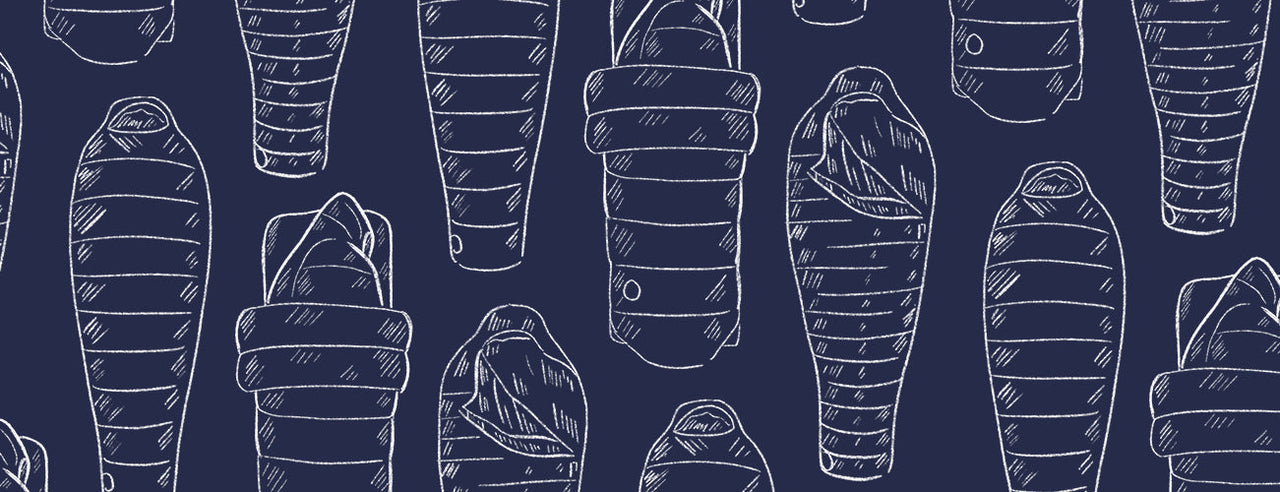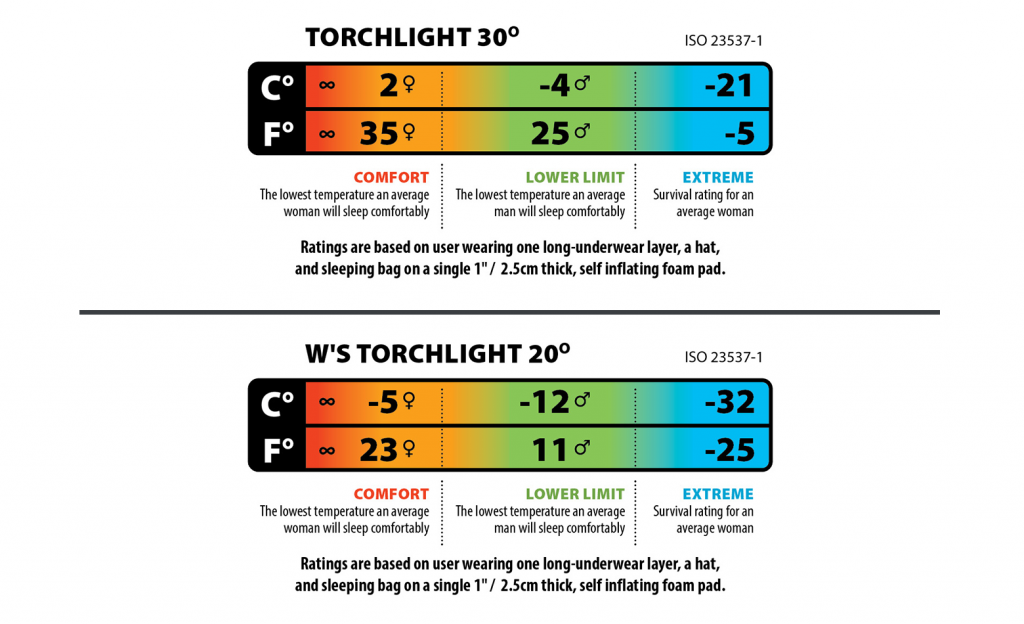A good sleeping bag makes all the difference.
The right bag is the difference between a restful night and a sufferfest when you’re camping. Finding your perfect sleeping bag can be overwhelming. There are a lot of options out there, and a lot of variables to consider! Let’s help narrow it down with these helpful tips.
Finding The Perfect Sleeping Bag Temperature
Every person has their own comfort level when it comes to warmth and their sleeping bag. While the best thing to do is to see what works best for you, here are a few things to keep in mind when finding the perfect sleeping bag:
Sleeping Bag Temperature Rating Standards
Most modern sleeping bag companies use testing methods overseen by the International Standards Organization (ISO) to determine sleeping bag temperature ratings. This means that two bags rated at the same temperature should keep you similarly warm, even across brands.
ISO ratings for Big Agnes bags can be found on bigagnes.com on a sleeping bag's page, under "Specs".
**Please note – certain styles of our bags have un-insulated portions by design, so they may not be eligible for the ISO test as they are one part of a two-part system**
Women’s Sleeping Bags Vs. Men’s Sleeping Bags: What’s the Difference?
Anatomically speaking, women generally sleep a bit colder than men. For this reason, the temperature rating for a women’s specific sleeping bag is determined by the ISO “Comfort Rating”. This is warmer than the ISO “Lower Limit Rating”, which is used to produce the rating for men’s and unisex sleeping bags.
When in Doubt, Warmer is Better
If you’re on the fence between two temperature ratings, it’s often recommended to go with the warmer option. You can always unzip your bag to cool down if you’re too warm, but it’s much more difficult to warm up once you already have all of your layers on.
Most Big Agnes sleeping bags have two zipper sliders to allow venting from the bottom or even stick your feet out if you get too warm.
Finding the Right Style
Everyone sleeps differently, and we have different sleeping bags to match various sleep styles. Refer to this guide to help decide which of our sleeping bag styles is right for you!
Pro Tip: Any two sleeping bags of the same style and zipper length with zippers on opposite sides can be zipped together to create a cozy doublewide sleeping bag for you and your partner!
Types Of Big Agnes System Sleeping Bags:
System Bags

Insulation requires air to work effectively, and lying on top of the insulation in a traditional sleeping bag renders it ineffective. With any sleep system you'll want a properly insulated sleeping pad to keep you warm against the cold ground. Our System sleeping bags feature no insulation between the sleeping bag and pad - this not only saves weight and bulk, but makes for a more comfortable sleeping surface, without lying on top of clumped, ineffective insulation.
Big Agnes System bags keep you secure on top of your pad at night - no more rolling off of your pad onto the ground! They also tend to provide more room than a traditional mummy style bag and reduce friction noise between your sleeping bag and pad.
-
Little Red & Wolverine (Youth)
-
Torchlight EXP Youth (Expandable Youth Bag)
-
King Solomon (Doublewide)
- Dream Island (Doublewide)
These bags are great for those looking for a Big Agnes PadLok Sleep System bag solution for themselves, at a specific temperature range. These bags include our Youth and Doublewide options. Our new cinch pad sleeves are very adjustable to a variety of pad of pad sizes. If a bag does require a more specific size range, you can find the recommended pad size in the “Specs” section.
All Big Agnes System bags require an appropriately insulated sleeping pad to create an effective sleep system.
Mummy Bags
-
Sidewinder SL (Designed for Side Sleepers)
Traditional mummy bags are technical, minimalist bags. Ideal for those Spartans who want to sleep in a bag without a pad. They are also great for hammocking, couch surfing, hosteling, back seat of the car naps or the ultimate red-eye flight portable bed. These bags offer insulation all the way around. They can be used on top of a sleeping pad (recommended) or stand alone. We even have our Sidewinder series designed with the side sleeper in mind!
Quilt, Liners and Comforters
For the true minimalist, gram-counting, ultralight dorks out there, quilts pack smaller and lighter than sleeping bags. However, your temperature options may be more limited than other sleeping bags. Quilts, liners and comforters can be used on their own in warm temperatures or combined with a sleeping bag for extra warmth and versatility They can be used on top of a sleeping pad (recommended) or stand alone.
Choosing Insulation Type
Another consideration in finding your perfect sleeping bag is the type of insulation used. There are two main types: Down and Synthetic.
Down Sleeping Bags: Maximum Packability, Minimum Weight
At a given temperature rating, down fill sleeping bags will be lighter and more packable than synthetic fill sleeping bags. When looking at down sleeping bags, consider the fill power – most sleeping bags fall between 550 and 850. Down relies on loft to keep you warm. As the fill power rating rises, you get a higher quality, loftier fill that provides better insulation value for a given weight. Between two sleeping bags at the same temperature rating, the one with the higher fill power will be lighter and pack smaller. Sleeping bags listed as “Ultralight” or “UL” usually feature 800+ fill power down as insulation.
The Big Agnes Advantage
Sleeping bags that use traditional down fill can be vulnerable to water. Down relies on loft to trap air and insulate it. When down gets wet this loft collapses losing much of its insulation value. Fortunately, modern technology makes this much less of an issue! All Big Agnes down sleeping bags use hydrophobic Downtek™ Water Repellent Down which performs up to 27 times better when exposed to water than untreated down.
Synthetic Sleeping Bags
-
Better When Soaked
Even though modern down fill is not as vulnerable to water as it once was, synthetic is your best bet if you expect to get thoroughly wet. Synthetic insulation doesn’t lose its loft and insulation value even when it’s dripping wet. Plus, it dries out more quickly than down. -
Best Value
Synthetic insulation is less expensive to produce. So, at a given temperature rating, synthetic fill sleeping bags generally cost less than comparable down bags. -
Sustainability
If you’re looking for a more environmentally friendly option, synthetic is the way to go. Synthetic fill is made without the use of animal byproducts, thus often making them vegan-friendly.
The Big Agnes Advantage
Our synthetic sleeping bags use Fireline™ insulation, a proprietary insulation developed by Big Agnes. This comes in four varieties, including Fireline™ Max and Eco, which use 50% and 100% post-consumer polyester material, respectively!


 English (EUR) | EN
English (EUR) | EN 
